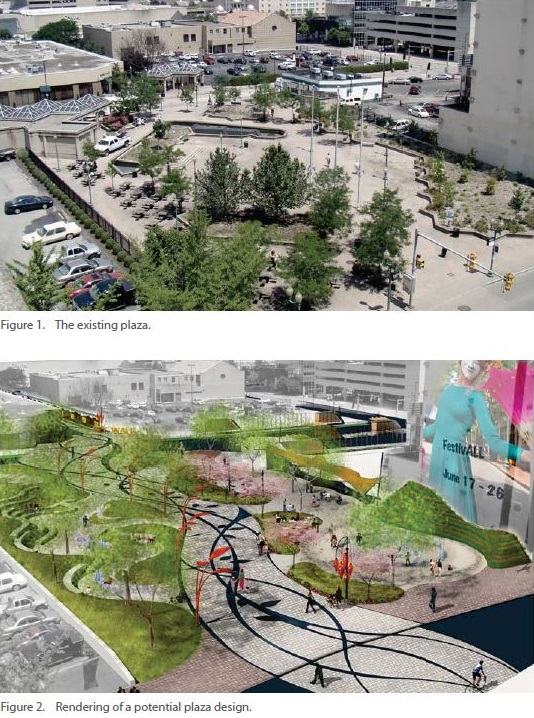There’s a step-by-step, city-by-city effort unfolding to add a little green to U.S. capitals, and three more cities have just been added to the program: Lansing, Mich., Madison, Wis. and Olympia, Wash.
Run by the U.S. Environmental Protection Agency, Greening America’s Capitals is a modest undertaking; it doesn’t shower cities with vast funds that they might use to remake their urban core, but instead offers assistance in building a community-involved process aimed at delivering a design for “greener, healthier, and more vibrant neighborhoods.”
Pretty words, right, but what are we really talking about here? Looking through the program’s portfolio – fifteen cities have gone through the process already – you get an idea.

Take Charleston, the capital of West Virginia, which went through the program in 2011, its first year. The focus there was on Slack Plaza in the northwest area of downtown Charleston.
Built in 1984 on the site of an old Greyhound station, the plaza was envisioned as a lively square at a downtown nexus point. But except for the weekday noon hour, it basically wasn’t working. It was dull, ill-defined and often kind of scary place. “The city acknowledges that the plaza lacks green space, has no real sense of place, and feels unsafe,” reads the design report.
The design conceived to address these issues appears to have a lot in common with those for other cities that have gone through the program, beginning with increasing the amount of planted space and tree cover. In Charleston, that was seen as a way to soften the feel of the plaza, provide shade, improve definition and flow, and generally create a more healthy environment.
The Charleston plan, like the others, also puts a big focus on dealing better with stormwater, using unit pavers, gravel, permeable asphalt or concrete, stormwater planters, lawn – all things that have clear environmental benefits but also help to bring the plaza to life.
Another aspect of the Charleston plan that rings true with others is a commitment to cycling and walking, with designated bike lanes and improved plaza circulation and lines-of-sight.
You can download a PDF of the whole Charleston plan here, but here’s a question: Nearly three years after this process delivered a beautiful plan, had anything actually changed in the plaza? Well, I was able to find a story from last June in the Charleston paper that suggested it hadn’t yet, but that change might be afoot. The newspaper wrote:
The long-discussed renovation of Slack Plaza and Brawley Walkway has never gotten off the design boards but its inclusion in Charleston’s new downtown redevelopment plan could give it new life. If the plan is carried out as proposed, both Brawley Walkway and Slack Plaza would be reconstructed to allow for a more open environment that could host events.